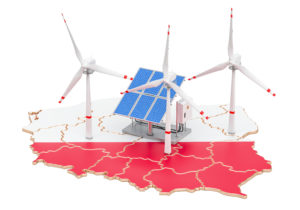
Thanks to campaigns against microplastic and reports on plastic waste in oceans, social awareness of the impact of plastic materials on nature is continuously growing. However, only now have the scientists investigated the impact of plastic on air pollution and climate change.
Scientists from the University of California, Santa Barbara have determined the contribution of plastic lifecycle to climate change and stated what should be done to reduce corresponding emissions. The results were published in the Nature Climate Change magazine.
The lifecycle of plastics is very closely related to carbon. An overwhelming majority of these materials is made of crude oil, which must be mined and distilled. The plastics are shaped into products and marketed. All these processes generate greenhouse gases, both directly and as a result of producing energy to conduct those processes. Carbon footprint of plastic stays even after it is dumped. Burning, processing or composting of some plastics generates carbon dioxide. Calculations reveal that in 2015 plastic emissions accounted for 1.8 bn tonnes of CO2.
Researchers expect this number to grow. They anticipate that the global demand for plastic is to increase by 22 per cent within the next five years. This means that the emissions should be decreased by 18 per cent. Given the current conditions, plastic-related emissions will account for 17 per cent of the world’s carbon budget by 2050.
“If we truly want to decrease the average temperature growth (…) down to 1.5 degree Celsius, there is no room for increasing greenhouse emissions, not to mention the emission which we expect for plastic lifecycle”, says the author of the research, Prof. Sangwon Suh.
Suh and lead author of the study, Jiajia Zheng, proposed four strategies to reduce plastic carbon footprint. The simplest solution is recycling. Now 90.5 per cent of plastic in the world is not recycled so there is plenty of room for improvement.
Increasing the share of bioplastic could also reduce greenhouse gas emissions. Bioplastic is produced from plants, which use CO2 in the atmosphere. If such plastics can be composted, carbon is released back into the atmosphere in the form of carbon dioxide. This makes the component material – carbon – environmentally neutral though its production still generates some small amounts of gases.
Reducing demand for plastic could also be effective though Suh admits this will be difficult. Plastic is universal, cheap and omnipresent. Scientists are still working on some kind of alternative, but plastics continue to lead the race. What is more, in developing countries, more and more people are reaching out to plastic, which is associated with modern lifestyle.
Suh and Zheng discovered that replacing energy generated by burning fossil fuels with renewable energy sources would contribute the most to limiting emissions of plastic-related greenhouse gases. An utter conversion to renewable sources could reduce the emissions by 51 per cent.
However, it turns out that only the combination of all these strategies would bring a significant result. “Public opinion must become aware of the scale of the challenge we are facing”, stressed Suh.
Article form Portal Komunalny
https://portalkomunalny.pl/jaki-jest-slad-weglowy-plastiku-390648/




